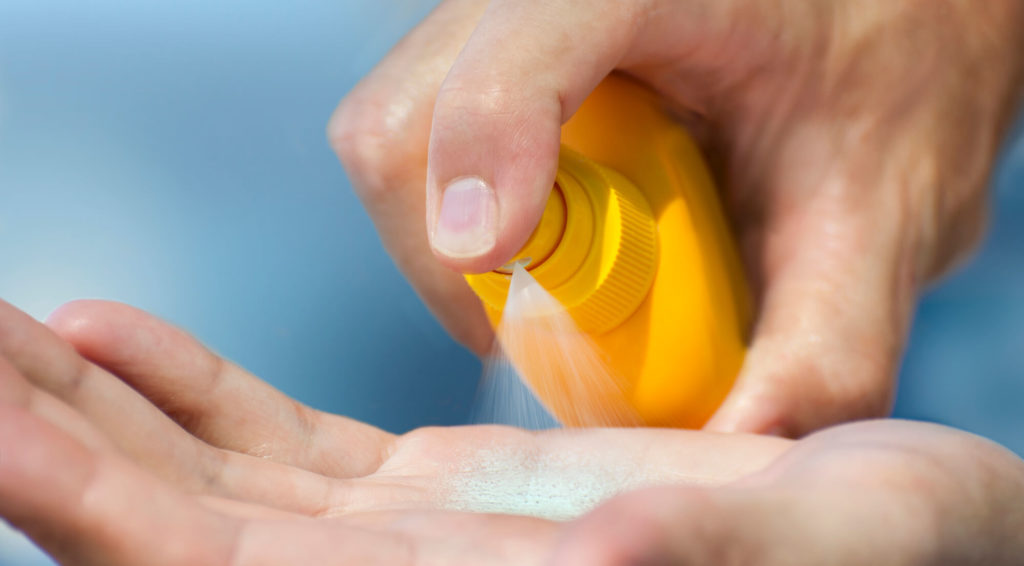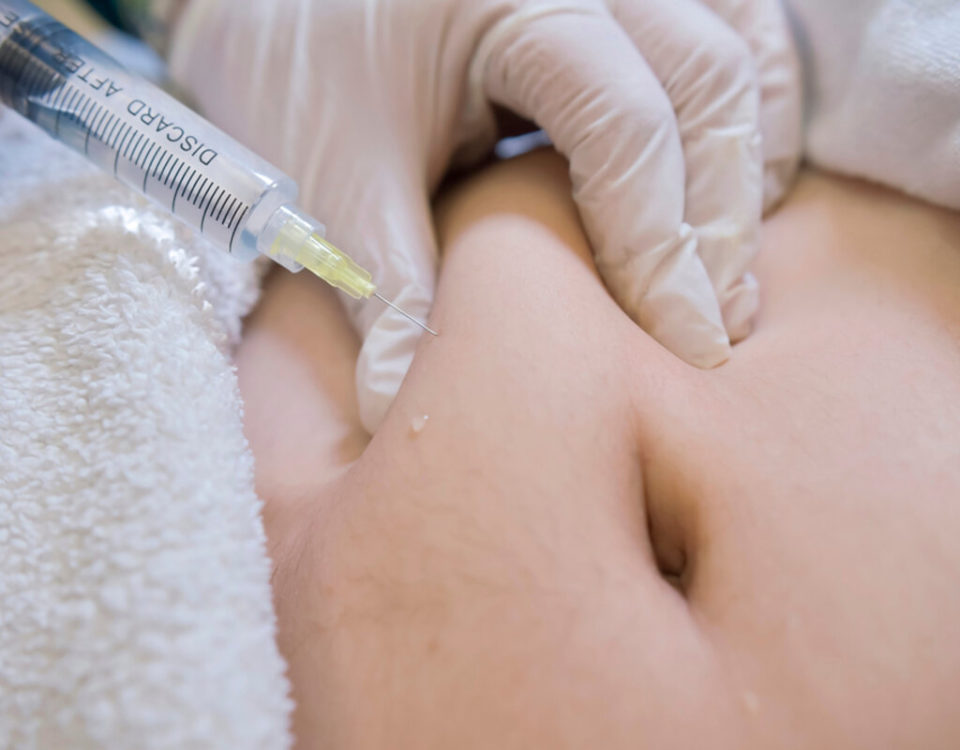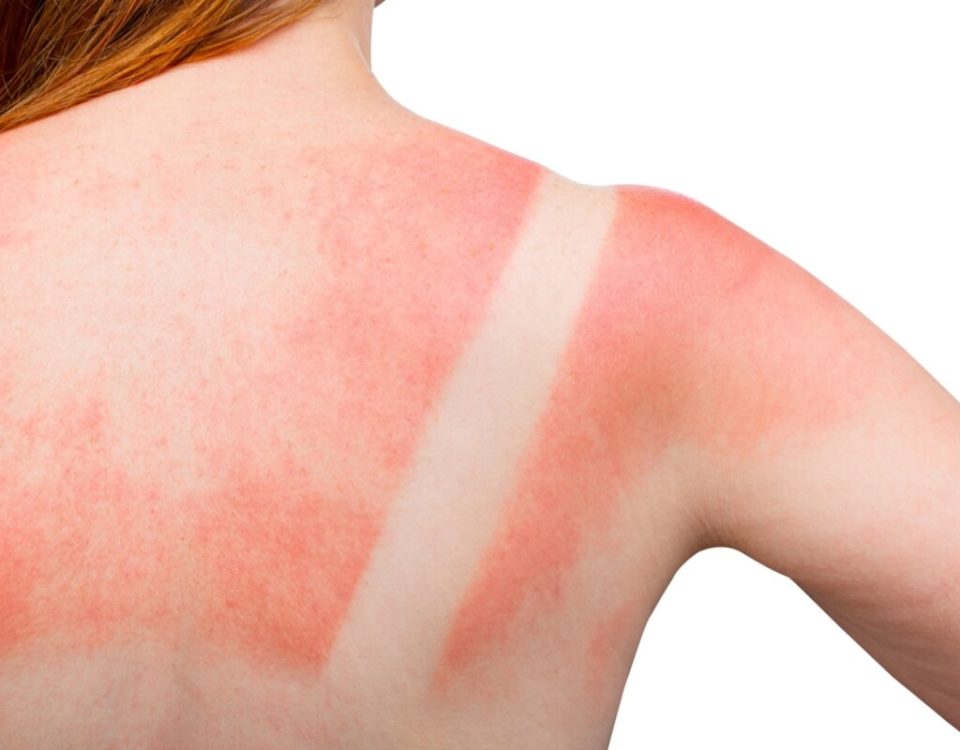
Birth Control: How Can it Change Your Skincare Routine?
December 8, 2020
Microdermabrasion vs. Dermaplaning: Which Is Right for You?
January 19, 2021How much attention do you pay to the little list of warnings on the side of your prescription bottles? If the answer is none, you may want to change that. Prescriptions come with warning labels for a good reason. While some medications will interfere with facial treatments or other activities, one of the most commonly overlooked or ignored medication warnings is sun sensitivity, also known as photosensitivity.
If you live or are going on vacation somewhere sunny, it’s essential to know if sun exposure will interfere with your medication and cause problems for your skin. Although sun sensitive medicines can cause severe problems if the warning is ignored, you can still enjoy the outdoors and minimize adverse side effects with the right precautions.
How Does the Sun Interact With Medications?
Some medications are made up of drugs that absorb ultraviolet light, which creates an excess of harmful compounds in the skin. The ultraviolet light is damaging whether it comes from a natural source, like the sun, or an artificial source, like a tanning bed.
Phototoxicity and photoallergy are the two types of photosensitivity.
Phototoxicity
A phototoxic reaction can occur within hours or even minutes of light exposure. When a photosensitive drug absorbs light, the formation of damaging compounds in the skin is triggered. The damage can reach as deep as the DNA of skin cells. This can cause an inflammatory response, like an intensely amplified sunburn. Amplified sunburn may not sound so bad, but it can be so severe that it lands you in the hospital.
Photoallergy
Photoallergy is much less common than phototoxicity. Instead of occurring within minutes of sun exposure, photoallergy may not happen for days after exposure. A photoallergic reaction takes place when UV light interacts with a drug, causing structural change. This structural change actually leads to the creation of an antigen, which is a blend of substances that the body recognizes as foreign. An allergic reaction is triggered by the immune system as it attacks the antigens and can spread beyond the area of sun exposure.
Heat Sensitivity
Photosensitivity describes how drugs interact with the sun to impact the skin. However, some drugs go beyond the skin. They reduce your ability to sweat, increase urination, and decrease thirst, heightening the adverse effects of heat, leading to heatstroke and dehydration.
Know the Symptoms of Sun Sensitivity
Sun sensitivity can have all kinds of side effects, from the skin to the entire body. The severity of sun sensitivity depends on a few factors: sun exposure, type of drug, and dosage. If you or someone close to you take medications that cause sun sensitivity, keep a close eye on any symptoms that arise.
Photosensitivity symptoms include:
- Pain
- Itching
- Discolored brown or blue-gray patches of skin
- Inflammation
- Red skin
- Hive-like blisters
- Patches of dry skin
- Sunburn
What Medications Cause Sun Sensitivity?
If you’re concerned about sunlight interfering with medication, the best place to seek advice is from your doctor.
Most medications that cause sun sensitivity are not well known. From antianxiety drugs and antidepressants to chemotherapy and heart drugs, sun sensitivity can be found in every corner of the pharmacy. However, some drugs are known by the public to cause sun sensitivity. For example, birth control is generally known to cause sun sensitivity, as well as a host of other things that can affect your skin. Some antibiotics are also known for causing photosensitivity, but not all of them. For example, one of the most well-known antibiotics, amoxicillin, has no effect on sun sensitivity. Even over-the-counter painkillers that sit in just about everyone’s medicine cabinets like Aleve and Advil can cause photosensitivity.
What prescription and over-the-counter drugs make a person sensitive to the sun? Check out the list of the photosensitive drugs, based on the Merck Manual and the FDA.
List of sun sensitive medications:
- Alpha-hydroxy acids (found in cosmetics)
- Antianxiety drugs
Alprazolam, chlordiazepoxide
- Antibiotics
Tetracyclines, fluoroquinolones, quinolones, trimethoprim, ciprofloxacin, doxycycline, levofloxacin, ofloxacin,
- Tricyclic Antidepressants
Amitriptyline, nortriptyline
- Antihistamines
Cetirizine, diphenhydramine, loratadin, promethazine, cyproheptadine
- Antifungal drugs
Griseofulvin, flucytosine, voriconazole
- Antihyperglycemics
Sulfonylureas
- Antimalarial drugs
Chloroquine, quinine
- Antipsychotic drugs
Phenothiazines
- Chemotherapy drugs
Dacarbazine, fluorouracil, methotrexate, vinblastine
- Cholesterol-lowering drugs
Simvastatin, atorvastatin, lovastatin, pravastatin
- Diuretics
Furosemide, thiazides, triamterene
- Acne drugs
Isotretinoin
- Heart drugs
Amiodarone, quinidine
- Pain-relief drugs
NSAIDs (non-steroidal anti-inflammatory drugs); ibuprofen, naproxen, celecoxib, piroxicam, ketoprofen
- Oral contraceptives and estrogens
- Psoralens
Methoxsalen, trioxsalen
- Retinoids
Acitretin, isotretinoin
- Sulfonamides
Acetazolamide, sulfadiazine, sulfamethizole, sulfamethoxazole, sulfapyridine, sulfasalazine, sulfisoxazole
- Skin Preparations
Antibacterials like chlorhexidine and hexachlorophene, coal tar, fragrances, furocoumarin-containing plants (limes, celery, and parsley), sunscreens

Protect Yourself
If you take a medication that causes sun sensitivity, there are ways you can protect yourself. To avoid developing any sort of reaction, follow these rules:
- Try to stay in the shade (or at least avoid the sun as much as you can) between 10:00 am and 4:00 pm.
- Wear long-sleeves, pants, sunglasses, and hats to help limit exposure
- Use sunscreen regularly. A broad-spectrum sunscreen will protect against all of the rays that trigger sun sensitivity reactions. While SPF 15 is the minimum protection, an SPF value of 30 or more is recommended. Pay attention to what is on the label. Some sunscreen ingredients can cause photosensitivity. To protect your body and especially your face, read our guide to the best sunscreen for your face.
At the end of the day, if you take medication, make sure you know if it can cause sun sensitivity. If you’re taking something that does cause photosensitivity, follow the guidelines above to protect yourself, familiarize yourself with symptoms of negative reactions to the sun, and be on the lookout for those reactions. If your skin has suffered severe sun damage from photosensitivity or some other cause, visit our skin professionals at SpaMD to learn more about our restorative skin treatments.
New Clients:
$35 deposit for all new clients
Cancellation/No Show Policy:
$35 fee for all no show, no call and any cancellations less than 24hrs before the start of your appointment.Any prepaid services will be forfeited.
Call us at +1(651)222-4490
Email us at SpaConsultantsMD@gmail.com
or, Schedule a free consultation
We are located on the main level inside of the Blair Arcade Building. We validate parking in the lot connected to the building off of Selby. Be sure to bring your ticket in with you!
Business Hours:
Monday: 9:00am - 8:00pm
Tuesday: 9:00am - 5:00pm
Wednesday: 9:00am - 8:00pm
Thursday: 9:00am - 8:00pm
Friday: 10:00am - 5:00pm
Saturday: 9:00am - 2:00pm (3 Saturdays per month- please call or email for more information)




